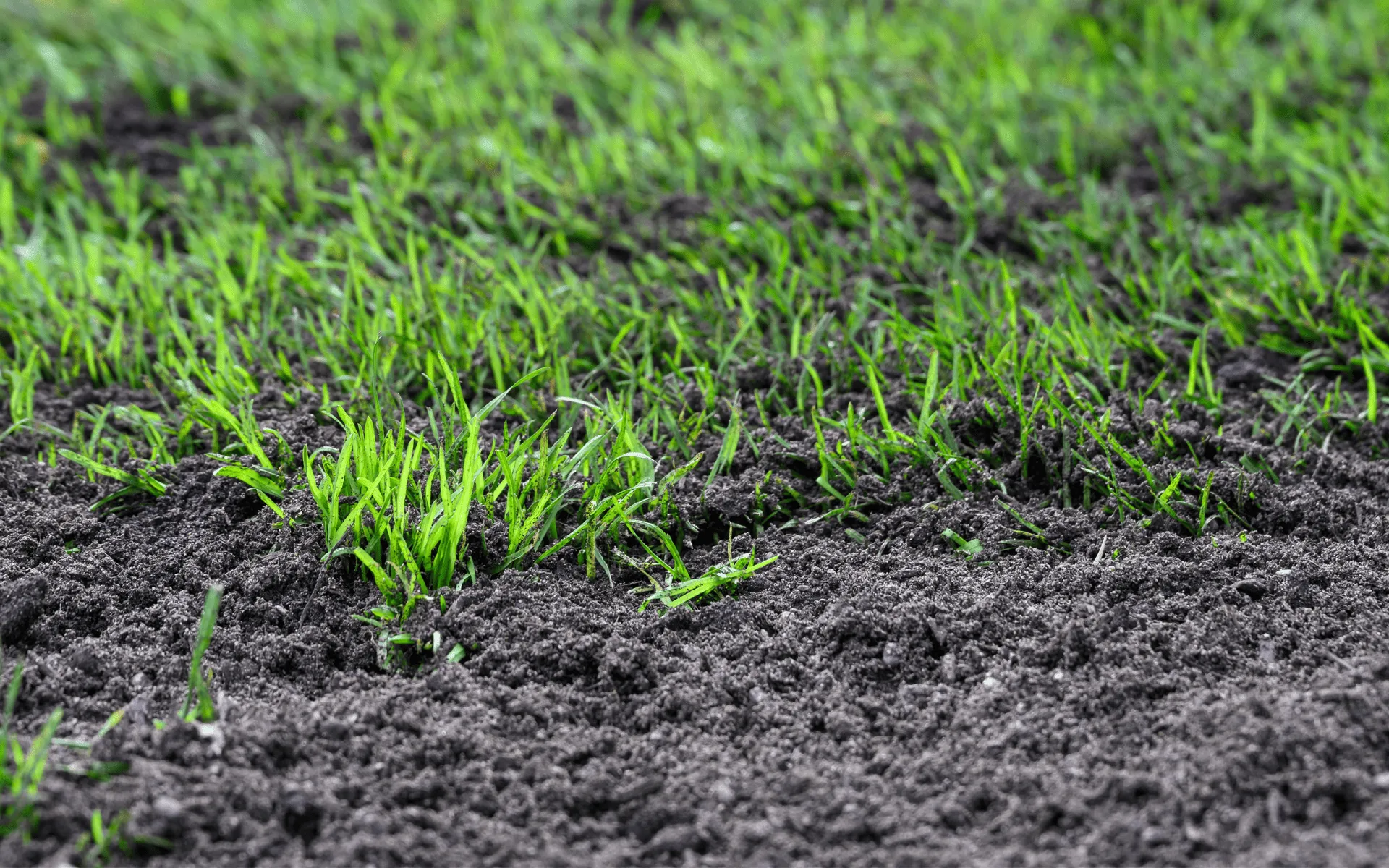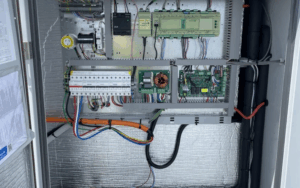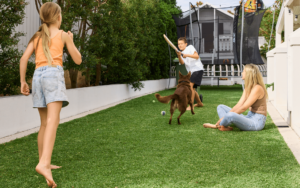Not every patch of dirt wants to be a lawn. Some soils fight your mower, your watering schedule and your fertiliser budget from the first day you lay turf. Knowing which soil types to avoid, and when to adapt instead, saves money and sets you up for long-term results.
Let’s look at the problem soils Australians run into, the risks they bring, and the practical fixes if moving the lawn is not an option. We will also tie it back to spring lawn care, because spring is the ideal time to correct soil limitations before summer stress hits.
Soil Types That Make Lawn Care Harder
Each of the following soils creates predictable problems for turf. If you can choose between parts of a block, pick the friendlier profile. If you cannot relocate, use the workarounds noted under each type.
1. Heavy, Poorly Drained Clays
Why avoid: These soils hold water for too long, excluding air from roots. In winter they get waterlogged, and in summer they bake hard and crack. Traffic compacts them quickly, making drainage even worse.
Symptoms:
- Puddles after rain
- Moss or algae on the surface
- Shallow roots and weak colour
- Footprints that linger on the lawn
Workarounds:
- Core aeration to create vertical channels
- Gypsum if tests indicate sodicity
- Topdressing with a sandy loam blend to build pore space
- Subsurface drainage where water has nowhere to go
- Choose turf with strong rhizomes like kikuyu or certain buffalo types
2. Hydrophobic Coastal Sands
Why avoid: Water beads and runs off instead of soaking in. Nutrients leach rapidly and the lawn struggles between irrigation cycles.
Symptoms:
- Dry patches that resist wetting
- Uneven colour even after rain
- Fertiliser response that peaks quickly then fades
Workarounds:
- Quality wetting agents applied on a schedule
- Frequent, light feeding with slow release and organic sources
- Compost topdressing to lift organic carbon
- Split watering cycles to reduce runoff
- Drought tolerant species such as couch or hardy buffalo cultivars
3. Saline or Sodic Soils
Why avoid: Salt in the root zone burns tips, reduces germination and stresses turf through osmotic effects. Sodicity disperses clay, sealing the surface and stopping infiltration.
Symptoms:
- Leaf tip burn that looks like fertiliser scorch
- Stunted growth despite regular water
- Soil that crusts and sheds water
Workarounds:
- Lab test to confirm salinity and sodium levels
- Leaching with good quality water when practical
- Gypsum for sodic clays to replace sodium on exchange sites
- Drainage improvements to move salts out of the profile
- Salt tolerant turf selections where exposure cannot be avoided
4. Shallow, Rocky or Rubble-Filled Profiles

Why avoid: Minimal soil depth restricts roots and dries fast. Rocks heat up, stressing turf during warm spells.
Symptoms:
- Patchy growth that tracks buried rubble lines
- Rapid drought stress and scalping over high spots
- Mower blades striking stones
Workarounds:
- Mechanical removal of rubble and rocks during renovation
- Importing quality topsoil to reach a minimum 100 to 150 mm profile
- Drip irrigation to target limited root zones
- Consider alternatives like garden beds or permeable paths in the worst areas
5. Compacted Subgrade and Construction Fill
Why avoid: Builders often leave compacted subsoil or mixed fill that sheds water and starves roots of oxygen.
Symptoms:
- Hardpan just below the surface
- Water running laterally and pooling
- Turf that never establishes evenly
Workarounds:
- Deep core aeration or shattering with a mechanical aerator
- Blending in sandy loam and compost to rebuild structure
- Ripping and regrading before laying new turf
- Strict traffic control during and after installation
6. Acidic Peat or Highly Organic Soils
Why avoid: Very acidic, spongy soils can tie up nutrients and stay wet for too long. They can also sink over time.
Symptoms:
- Bouncy surface underfoot
- Yellowing despite fertiliser
- Mushrooms and persistent moisture
Workarounds:
- pH testing and liming program to nudge pH upward
- Sandier topdress mixes to firm the surface
- Drainage improvements and thatch control
- Turf that tolerates moisture and shade where applicable
7. High pH Calcareous or Lime-Rich Soils
Why avoid: Excessive alkalinity locks up iron and other micronutrients, causing chronic chlorosis.
Symptoms:
- Pale yellow leaves with green veins
- Poor response to standard fertilisers
- White fragments of carbonate or shell in the soil
Workarounds:
- Use acidifying fertilisers and elemental sulphur as part of a long program
- Foliar iron for short-term colour correction
- Incorporate organic matter to buffer pH changes
- Choose turf that tolerates higher pH
8. Duplex Soils with Perched Water Tables
Why avoid: A sandy top sits on tight clay. Water perches at the boundary, causing soggy roots after rain, then drought once the top dries.
Symptoms:
- Boom and bust growth cycles
- Water sitting at spade depth after rain
- Dry surface with wet subsoil
Workarounds:
- Deep aeration to punch through the boundary
- Graded topdressing to smooth micro-relief and reduce ponding
- Subsurface drainage where practical
- Watering less often but deeper once structure improves
9. Reactive or Expansive Clays
Why avoid: They swell when wet and shrink when dry, heaving turf and breaking root contact.
Symptoms:
- Seasonal cracking and ridging
- Uneven lawn level after wet spells
- Edges that pull away from paths
Workarounds:
- Maintain steadier soil moisture with deep, less frequent watering
- Topdress to smooth seasonal movement
- Build organic matter to moderate shrink-swell cycles
How To Decide: Avoid, Improve or Replace
Before you lay turf, take a structured approach. It prevents pouring budget into the wrong fix.
Step 1. Test and observe
- Texture by jar or ribbon test
- pH with a simple kit
- Infiltration using a ring and a measured volume of water
- Rooting depth on existing vegetation
- Presence of salts or carbonate fragments
Step 2. Map constraints
- Mark wet spots, dry patches, shade lines and traffic lanes
- Note slopes and outlets for drainage
Step 3. Choose a pathway
- Avoid the worst pockets by reshaping the design or using groundcovers
- Improve with aeration, amendments, drainage and topdressing
- Replace soil where contamination, rubble or extreme salinity make fixes uneconomic
Adapting Your Program When You Cannot Avoid the Soil
If relocation is not feasible, align your program with what the soil will and will not do.
Watering
- Sands: shorter, more frequent cycles to keep roots supplied
- Clays: deeper, less frequent cycles to avoid waterlogging
- Duplex: water based on subsurface checks, not just the surface
Feeding
- Low CEC sands: smaller, more frequent doses with slow release
- Heavier soils: steady seasonal programs, watch for micronutrient lockout at high pH
- Salinity risk: avoid high salt index products, leach periodically
Mechanical work
- Core aeration on clays and duplex soils
- Scarifying on thatchy buffalo and kikuyu once healthy
- Topdressing tailored to the problem, not a one-mix-fits-all
Amendments
- Gypsum for sodic clays if tests support it
- Wetting agents for hydrophobic sands
- Compost to lift organic carbon across the board
- Sulphur or acidifying fertilisers for high pH sites, applied gradually
Spring Lawn Care Priorities for Problem Soils

Spring is the window to reset before heat. Use these sequences as starting points.
On hydrophobic sands
- Apply a wetting agent
- Deep soak in two passes to reduce runoff
- Light compost topdress
- Split slow release fertiliser into two or three applications
- Monitor with a screwdriver test each week
On heavy clays
- Core aerate as soils dry
- Apply gypsum if sodicity is confirmed
- Topdress with sandy loam to keep holes open
- Feed moderately to support root growth
- Set mowing height a touch higher to protect the surface
On saline or sodic sites
- Plan a leaching event with quality water
- Improve outflow with subsurface drains where possible
- Use balanced, low salt index fertilisers
- Schedule follow-up testing to track progress
On duplex profiles
- Aerate to break the perched layer
- Adjust irrigation to deeper intervals once structure improves
- Topdress to smooth micro-ponding
This is targeted spring lawn care, not guesswork. Doing the right task for your soil in spring pays off through summer.
Final Takeaway
You do not need perfect soil to grow a good lawn, but some soils make the job unnecessarily hard. Heavy clays, hydrophobic sands, saline or sodic profiles, shallow rocky fill and extreme pH all demand special treatment. If you can avoid them, do so.





